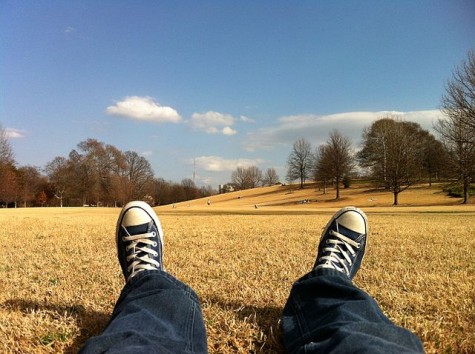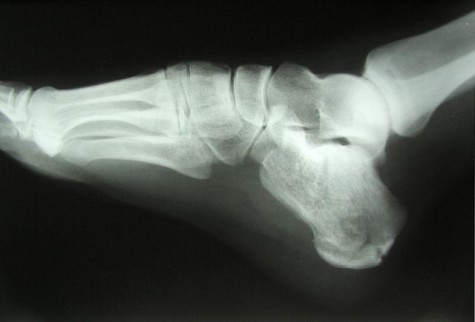 Right now, there are a bunch of people in Brazil—and a bunch more following along on television–who are paying very close attention to one particular body part: fast-moving, feat-making feet. But most of us don’t give our feet much thought until they start complaining.
Right now, there are a bunch of people in Brazil—and a bunch more following along on television–who are paying very close attention to one particular body part: fast-moving, feat-making feet. But most of us don’t give our feet much thought until they start complaining.
When they do complain, there doesn’t seem to be a one-size-fits-all solution–or shoe. Some walkers and runners with aching dogs swear by their orthotic inserts. But researchers aren’t exactly sure why orthotics work, who they work for, and, in some cases, whether they work at all.
Other people wouldn’t be caught running in any shoes. Barefoot runners and walkers, and those who get close-to-barefoot with minimalist shoes, champion the fore- and mid-foot footstrike and muscle strengthening that results from getting one’s soles up close and personal to the ground. (One of the shoes debuting at the World Cup seems to have that nearly barefoot, sock-like style—that is, if bare feet had cleats). But barefooting hasn’t yet been well-studied enough to see if it reduces injuries or improves performance over the long-term and for a wide array of feet. The only consensus seems to be that if what you’re doing is working, stick with it.
Soccer players, who may run seven miles or more during a 90-minute game, have an added set of complications. They’ve got to stop suddenly, turn, and make other quick lateral movements—and both their cleats and the surface they’re playing on can affect these movements. As can the other team: a study of foot and ankle injuries during the 1998 World Cup and other large events found that 67 percent of these injuries came from direct contact with another player.
But the strains and fractures suffered by pro soccer players, and by undertrained and overzealous weekend warriors like me, are only a small part of the problems that can make our foundation shaky. A host of non-sports-related ailments can wreak havoc on anyone’s feet. A stroke can throw off a person’s foot biomechanics. Diabetes can result in lower blood flow to the feet, sometimes requiring amputation. This disease—along with cancer treatments like chemotherapy–can also cause neuropathy in the feet, making them tingle and hurt, or creating numbness and muscles weakness that can set a person up for a fall.
There might be more foot problems in our future, too. Kids who are obese may be set up for a host of medical problems, including foot injuries. A recent study in press at Clinical Biomechanics found that obese children’s feet may be less sensitive and experience more pressure on the bottom of their feet, a combination which could set them up for more foot problems—even as they try to participate in active pursuits. Targeted shoe design, the researchers think, could help.
One of the trickiest things about studying feet and their injuries is that they’re so individual. A person’s toe length, arch height, foot shape, weight, posture and more can affect how the foot’s 26 bones, 33 joints, and 100-plus muscles respond to ordinary—or not so ordinary—movement. When people talk about personalized medicine, they usually think of genetic information that could be used to find everything from disease risk to create targeted cancer vaccines. But maybe someday, along with giving a blood sample to get our custom meds, we’ll have gait analysis and a prescription for bespoke shoes to keep our feet flying. If only they could look like this.
**
Images from Wikimedia Commons: Converse in Field by Ilham Rahmansyah; Calcaneus Fracture by Jojo
I went to my doctor because my feet hurt. He said that when he used to run marathons, 50 % of the people lining up at the start were discussing the race, the other 50% were talking about their plantar fascitis. He said, “I have three words for you. Good. walking. shoes.”